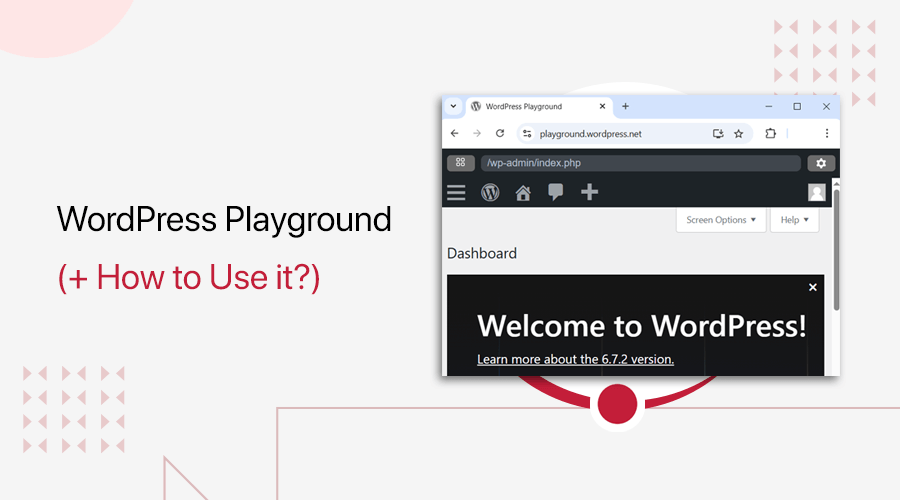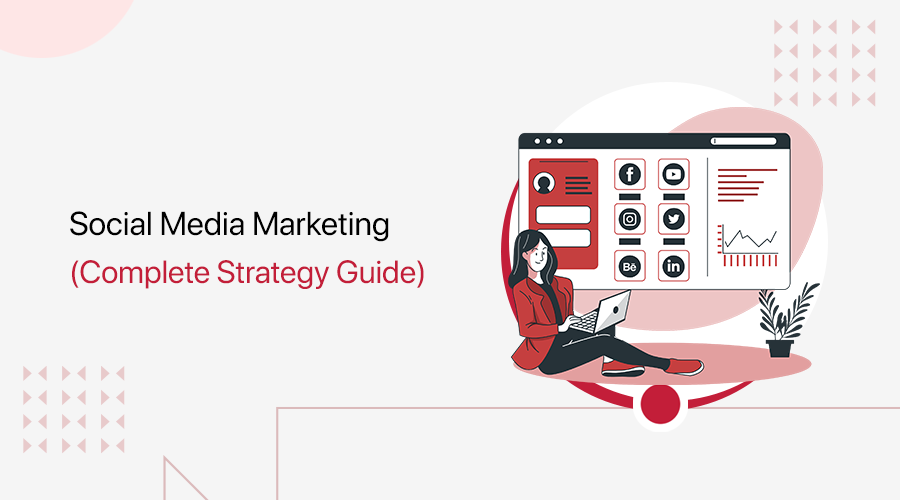
Curious about social media marketing? Eager to learn how to master it? Look no further.
In today’s digital landscape, social media marketing has emerged as a powerful tool for brands and businesses of all kinds.
It offers unparalleled opportunities to build relationships, engage with customers, and boost sales. Plus, it’s faster and more cost-effective than traditional marketing efforts.
Whether you’re aiming to elevate your brand’s presence on social media or enhance your skills as a social media marketer, crafting a solid social media marketing strategy is essential.
To help you navigate the world of social media marketing, we’ve put together an accessible guide exclusively for you.
Let’s dive in!
A) What is Social Media Marketing?
Social media serves as a dynamic platform for communication and interaction among people online. Via social media, you can share information with friends, business partners, and customers. This information can take various forms, including images, text, videos, and more.
In essence, social media facilitates direct communication between marketers and their audiences.

Today, businesses use social media to achieve several key objectives. They engage with users, receive real-time feedback, and enhance their products or services.
At its core, social media marketing involves presenting your business to a social media audience. Compromising of the following components:
- Increasing Website Traffic: You can drive traffic to your website by strategically promoting your brand on social platforms.
- Customer Engagement: Social media provides a space for meaningful interactions with your audience, fostering loyalty and trust.
- Brand Awareness: Leveraging social channels allows you to amplify your brand’s visibility and reach.
- Content Creation: Crafting diverse content, such as videos, blogs, and photos—helps you resonate with your audience and potentially go viral.
Today, various social media platforms cater to mass markets and niche audiences. Let’s see the leading ones:
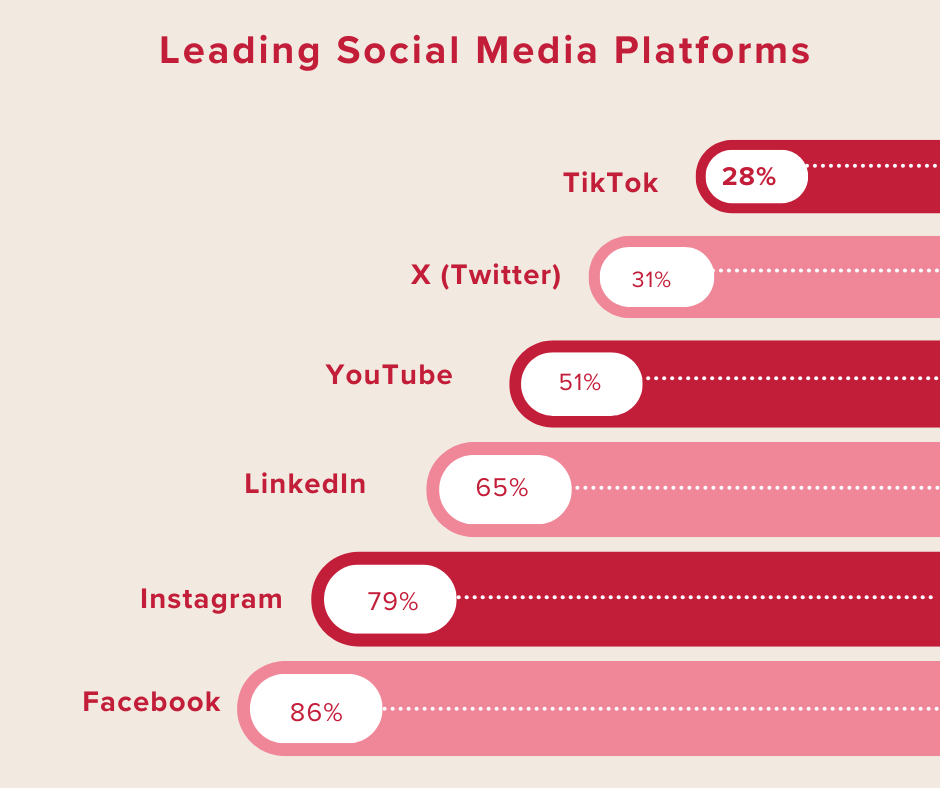
- Facebook leads with 86% being the most used social media platform in 2024.
- Instagram stands at the 2nd position with 79% of usage. (Source)
- LinkedIn is ideal for professional networking and B2B interactions and has 65% usage as of 2024. (Source)
- YouTube is the go-to platform for video content, tutorials, and entertainment and has 51% usage. (Source)
- X (Formerly Twitter) is known for its real-time updates and concise messages and is in 5th position with 31% usage. (Source)
- While the trending TikTok has 28% usage as of 2024. (Source)
In summary, social media marketing combines the power of social platforms and influential voices. To create impactful strategies that resonate with audiences worldwide.
B) Why Does Social Media Marketing Matter?
As of 2024, over 5 billion users are connecting via social mediawhich is 67.5% of the global population. Also, in 2024, the average daily social media usage of internet users was 143 minutes per day worldwide.
This shows that, there’s a huge potential customer base, and we’re not just talking about the tech geeks. But you’ll find almost anyone online from teens to senior citizens, students to high-level executives.
Hence, we could say it’s truly a universal medium.
Some of the important reasons why social media marketing strategy matters are:
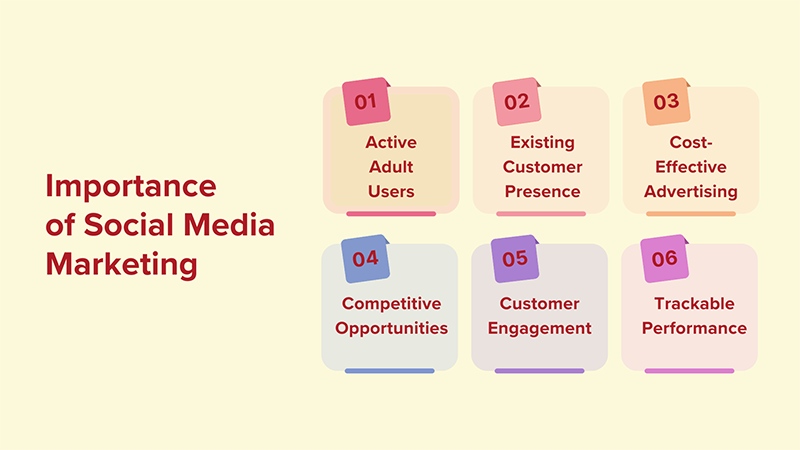
- Active Adult Users: While teens use Facebook for entertainment, adults are the more active and engaged users. Further, offering substantial purchasing power.
- Existing Customer Presence: Many existing customers may already be active on social media, talking about your brand and influencing others.
- Cost-Effective Advertising: Social media offers cheaper and faster advertising compared to traditional methods. This allows for viral marketing and community building.
- Competitive Opportunities: Both small startups and large businesses can compete on social media. With a high potential for smaller ones to outsmart larger ones via active engagement.
- Customer Engagement: Social media enables ongoing conversations with loyal customers, fostering stronger connections and providing valuable feedback.
- Trackable Performance: Metrics such as views, likes, shares, and comments allow you to measure the impact of your strategy and refine it for better results.
No doubt, social media marketing offers unparalleled access to a wide audience, cost-effective advertising, and valuable insights into customer preferences. Which makes it a crucial part of any modern marketing strategy.
C) Building a Social Media Marketing Strategy
Below is a step-by-step on how to create a social media marketing strategy. It helps you identify your social goals, engage audiences, and optimize your results:
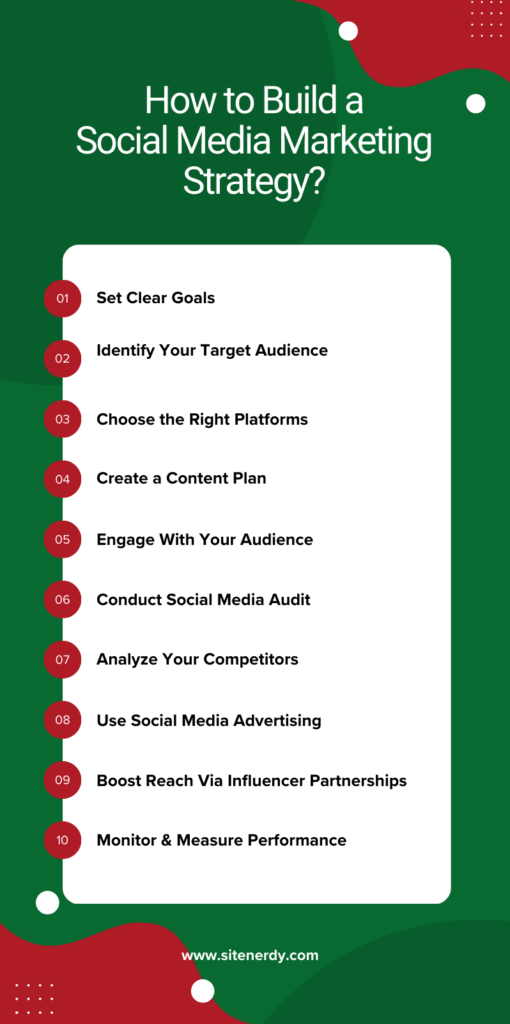
1. Set Clear Goals
First thing first: you wish to set up the goal that you simply want to achieve using social media marketing. Without goals, you’ve got no way to measure success and return on investment (ROI).
So, before you begin posting online, make sure to define your strategy’s overall goals and confirm that your social media marketing plan meets your overall business goal.
Therefore, you’ll want to make sure that your goals are SMART:
- Specific: Always be specific about what you would like to achieve.
- Measurable: How are you going to know that your goal has been achieved?
- Attainable: Allows aim for something that will be achievable and it’s realistic at the same time.
- Relevant: Always confirm that your goal matches together with your company’s mission and values.
- Time-Bound: By what time do you wish your goal to be achieved?
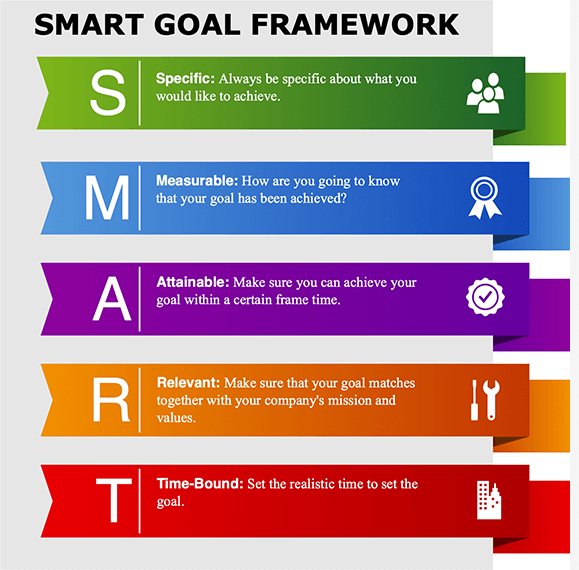
For example, if you’re an owner of a retail shop and you normally sell about 20 products each day and by using social media why not aim to sell 25 per day.
After a couple of months, you can evaluate where you’re at by using analytics tools or other metrics that might help you track and measure your activity. This will help you find more information in a short period.
Let’s say if you’re using Facebook ads then you’ll measure using cost-per-click (CPC). Alternatively, you can track the number of Instagram Story views by using Instagram.
So, if you’re getting to start developing your social media marketing plan, then start it by writing a minimum of 3 goals for your social media.
2. Identify Your Target Audience
After you have defined your goals, it’s time to understand your audience and what they wish to see on their social media feeds.
It’s very important to understand who your audience is and what they need to see on social media. In this way, it’ll help you to make a social media post that will go viral with likes, comments, and shares.

And if everything goes well, then you’ll be ready to turn social media followers into loyal customers for your business.
While you’re trying to find your target audience, make sure that you simply look for these things:
- What age group and gender are you initially following as your potential audience?
- In which field of the topic your audiences have an interest in?
- What social media do they like to hang out the most?
- How do they intend to use that information?
In this way, it can help you understand your audience’s needs, wants, likes, and dislikes. Based on that, you can simply create products/services to meet your audiences’ needs.
3. Choose the Right Platforms
In most cases, it’s been found that some people don’t spend time and energy on finding the proper social media for their business. This type of habit sometimes may come with consequences at the end of the day.
Since most of the social media are free so your time is valuable. So to use your valuable time, you want to always focus on one or two core social media. It also makes it easier to handle your social media account without any obstacle.
Some widely used social medias are:
- Facebook: Connect with people and discover communities all in one spot.
- X (Formerly Twitter): Real-time news and conversations, one tweet at a time.
- LinkedIn: Build your network, grow your career, and share expertise.
- Instagram: Share your story through photos, reels, and creativity.
- YouTube: Watch, learn, and get entertained with endless videos.
Also, every social media site might not suit the type of business you run. Hence, it may hamper your marketing, your audience, and also what you’re trying to achieve.
Therefore, to help you choose where to start with, firstly identify which social media your audience mostly hangs out with. Or, secondly, search for the social network demographics to help you discover which is the best one for you and your business.
Always avoid wasting time on such social media that your audience doesn’t use it.
4. Create a Content Plan
The majority of the brand’s face on social media is to consistently publish high-quality content for their audience. If you don’t post or keep updating online, people will assume that you’re going out of business.
Since it’s the consistency that will help you to boost your level of engagement and foster a strong relationship together with your audience. So, one of the ways to get it right is by planning with a social media content calendar like Google Calendar, Hootsuite, or Trello.
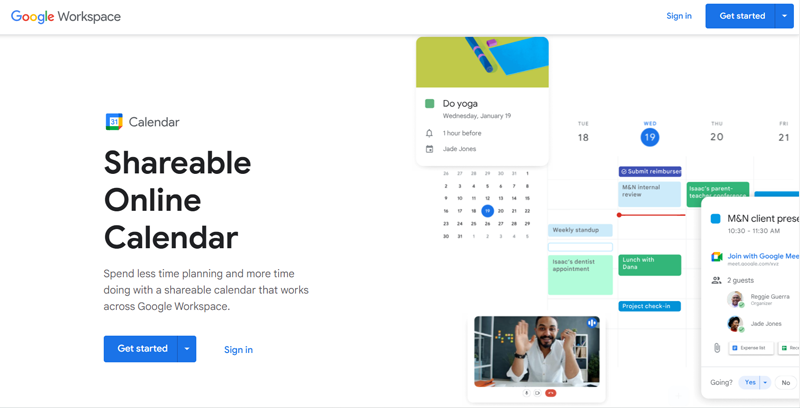
This will help you to plan your activity for weeks, or maybe months ahead. It also can help you with how to step back from a day-to-day posting and helps you come up with a wider strategy.
Although it looks like continuous posting to social media seems to be an honest choice, for the foundation of your strategy, a content calendar is very recommended.
One simple way to plan a content strategy would be to make a different theme for each day across your social media.
For example, you can share your new blog post on Mondays, asking Q/As on Tuesdays, sharing your pictures on Wednesday, and so on. This way it’ll occupy your calendar, and stop yourself from becoming overwhelmed.
5. Engage With Your Audience
To effectively engage with your audience, you should create and share content that aligns with your goals and brand identity.
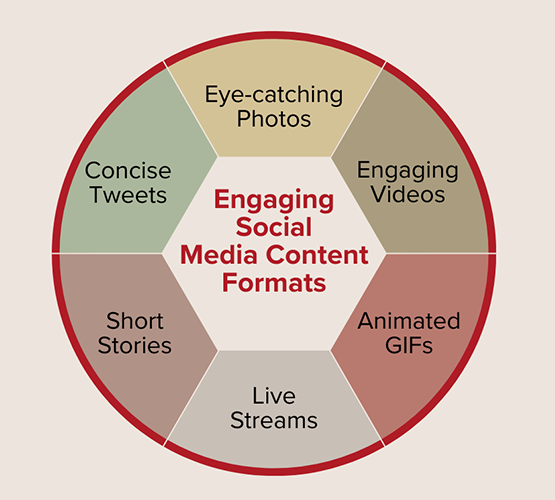
Social media platforms offer a variety of content formats you can leverage to keep your audience engaged:
- Eye-catching Photos: Share eye-catching images that tell a story or showcase your products and services.
- Engaging Videos: Use short, engaging videos to provide value, entertainment, or behind-the-scenes looks.
- Animated GIFs: Add a touch of fun and creativity with animated GIFs that capture attention.
- Live streams: Host live sessions to interact directly with your audience in real time.
- Stories: Utilize stories to share temporary content that keeps your audience engaged and encourages frequent visits.
- Concise Tweets: If active on X (Formerly Twitter), use concise and impactful tweets to share updates and engage in conversations.
By diversifying your content types and consistently sharing quality material, you can foster a strong connection with your audience and keep them coming back for more.
Nevertheless, consistent posting is key to maintaining a strong presence on social media and keeping your audience interested. Avoid the pitfall of starting strong and then letting your activity taper off over time.
6. Conduct Social Media Audit
A social media audit is the best way to get an idea about your content which will match with your audience, and a great way to decide upon what you would like to post to your audience. As we’ve talked earlier try to ask yourself these questions again and again.
- What’s working and what’s not?
- Are the audience participating in your social posts?
- What age group of people is engaging with you?
- How is your social media presence different from your competition?
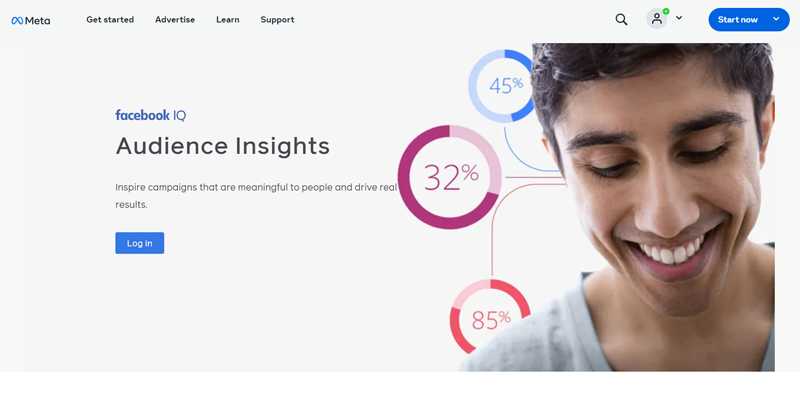
You can use analytics tools from social media platforms like Facebook Insights and X Analytics, or third-party tools. These help track and measure audience behavior, including engagement, reach, impressions, clicks, conversions, and more.
Once you’re able to collect the information, then you’ll be ready to start considering ways to improve. Because it helps you to offer you a clear picture of what purpose each of your social media serves. If the purpose of your social media isn’t clear, then consider whether it’s worth keeping.
Another very important thing while auditing is to understand about the optimal time for the post to be posted on social media to urge more engagement. Since you should be knowing about what’s right for your business and you’ll use your page insights to work out what’s working.
7. Analyze Your Competitors
This is another step during which you’ll identify your competition then evaluate their strategies. In doing that, you’ll learn their strategies, strengths and weaknesses then you’ll make even better marketing strategies for your business.
You can use competitor analysis tools like Semrush, or follow your competitors’ social media accounts. And watch their content, engagement, and feedback to gain insights.
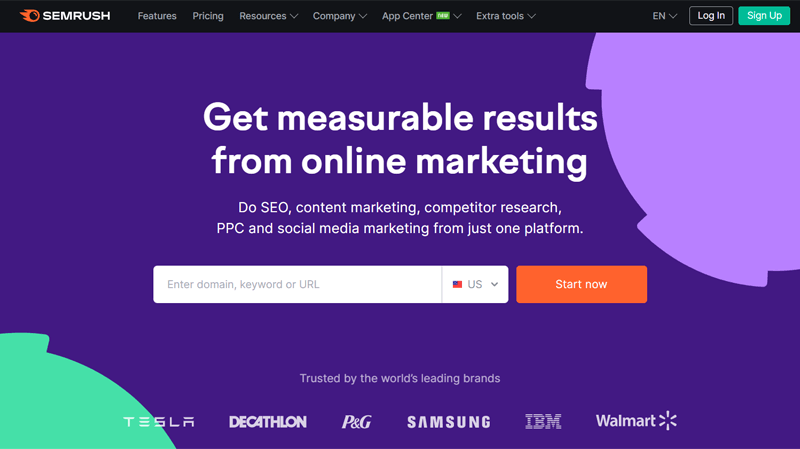
However, remember that your goal shouldn’t be to copycat or steal ideas from your competitors. But rather to see for what’s working for them and how can you adapt to that together with your ideas.
Your competitors may be dominant in one particular social media with little effort into other platforms. So attempt to make sure that you simply would focus on that platform where your audiences are given less priority instead of trying to win followers far away from a dominant one.
For example, here’s how Samsung Mobile tweets on “Galaxy 5G” looks like.

At the same time when you’re researching on your competition check that you simply would research on following questions too:
- What kind of social media posts are they posting?
- What is the tone of their voice?
- In which social media platform they’re most active?
- How frequently are they posting and spending time on social media platforms?
8. Use Social Media Advertising
Once you’ve analyzed your competitors, you can use social media advertising to boost your online presence and reach a larger audience.
Did you know, that social media platforms offer targeted ad options that let you customize campaigns based on factors like demographics, interests, behaviors, and location?
This precise targeting ensures your ads reach the right people, increasing the chances of engagement and conversions.
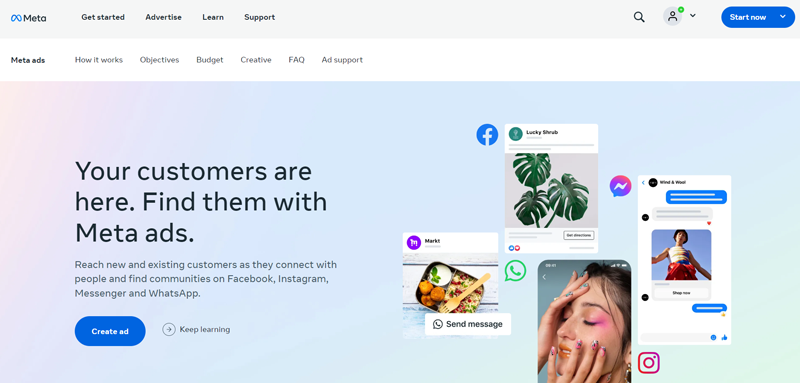
So, you need to choose platforms that match your audience, such as Facebook, Instagram, Twitter, LinkedIn, or TikTok, and set clear goals for your campaigns. And monitor and adjust your campaigns regularly based on performance data to improve results.
Try different ad formats such as images, videos, carousels, or interactive ads to grab your audience’s attention. With the right strategy, social media advertising can greatly increase your brand’s visibility and lead to measurable results.
9. Boost Reach Via Influencer Partnerships
Likewise, you can leverage the power of social media advertising and influencer marketing to expand your reach and grow your audience. As collaborating with influencers, often known as brand ambassadors or advocates, can provide significant benefits.
Not all social media users have the same level of influence. Some have a larger, more engaged following with a strong reputation, giving their opinions more weight and impact. These individuals are known as social media influencers.

Partnering with influencers can be especially beneficial for smaller or newer online communities. Instead of indiscriminately approaching everyone you can, take the time to research and select influencers whose audience aligns with your target market.
By choosing influencers whose followers match your target demographic and offering quality content to the people they direct your way.
As a result, you increase the chances of converting these individuals into your own social media followers. This strategic approach can help you grow your network and enhance your brand’s visibility.
Finally, you can also promote it by running ads on your social account from where you’ll get your targeted audience to build brand recognition and increase your social followers.
10. Monitor & Measure Performance
Monitoring and measuring your social media performance is key to doing well in the long run. Set goals and use the data to see what’s working best.

Understand how your audience finds your content so you can focus your efforts on those areas. Your initial social media plan might not be perfect, so adjust it as you go.
Look at your progress regularly and try out new ideas when necessary. Keep doing what works for you and tweak your strategy based on the data you collect.
D) Different Metrics for Different Social Media
Not all social media platforms are created equal, and each one requires specific metrics to measure its effectiveness in your social marketing campaigns.
When assessing your brand’s performance, it’s crucial to track comparable metrics for your competitors as well. Understanding how their social marketing efforts stack up against yours provides valuable insights.

Now, let’s explore the metrics that matter most for some popular social media platforms:
i. Facebook
- The number of followers: If you have a page on Facebook, then the most basic way to measure would be the number of followers. It usually represents how popular your brand is on Facebook.
- Total interactions: It’s the total number of comments, wall posts, and other interactions generated by your post.
- Click-through rate CTR: This is another important metric that shows how much people engage with your content on their news feed.
- Discussion posts: The total number of people participating in any of your polls or questions posted.
- Reviews: It’s the number of times that your followers have used the Facebook Reviews to rate your page.
ii. YouTube
- Views: It’s the same data that public users can see. You can also check the number of unique views and the number of views by location. This can help you to know whether the people watching your videos are your target audience or not.
- Demographics: This category gives you the data by age, telling you what percentage of the views came from users in specific groups.
- Engagement: This will give you information about the people who have interacted with your YouTube videos through commenting, ratings, and sharing with their friends.
iii. X (Formerly Twitter)
- Brand mentions: The most basic metric for X account is knowing how your brand is mentioned and with what frequency on Twitter.
- Engaged Followers: The number of followers who respond to your tweets.
- Retweets: The number of retweets your tweets receive.
- Click-through: It’s the number of clicks you receive divided by the number of times your post is shown. It helps you understand your customers and tells you what works and what doesn’t work.
- Hashtag Activity: Numbers of tweets that occur around the hashtags that you have created.
E) Mistakes to Avoid
After following all the right steps with your social media marketing plans, you still somehow fail on some points. It happens when you overlook the common mistakes of SMM.
So avoid these common mistakes for a successful social media marketing campaign:
i. Over Promotion; Not Building Relationship
Social media users seek interaction and entertainment, not aggressive sales pitches. Therefore, you should build trusted relationships by sharing valuable content and offering excellent customer service.
Most importantly, it’s important to shift your focus from selling products to helping and engaging with your audience.

For example, here’s how the H&M post for their new autumn arrival looks like. It’s simple and easy to understand what they’re trying to sell.

ii. Not Being Patient
We all know that social media success doesn’t happen overnight. As social media success requires time and effort to cultivate relationships and trust.
Therefore, focus on committing to consistent engagement with your audience and be patient as you build your brand.
iii. Not Providing Customer Support
Always be available to customers when they need you. Addressing their concerns positively provides insights into your audience and your business’s performance.

When facing a controversy, don’t avoid it—address it publicly on social media to prevent similar issues in the future. Respond to complaints professionally and within a reasonable time frame.
Acknowledge customer feedback, even if it’s negative. Avoid defensiveness; instead, admit shortcomings and commit to future improvements.
iv. Forgetting/Ignoring your Audiences
Last but not least, recognize and reward your loyal followers who support your brand. You can offer special events, discounts, or features to show appreciation for their contributions.

By avoiding these mistakes, you can create a strong and lasting social media presence that resonates with your audience.
F) Social Media Marketing Tools
We have listed some of the most commonly used social media marketing tools below:
i. Post Planner
Post Planner is a versatile social media scheduler designed to enhance engagement and streamline content management. It simplifies social media posting by suggesting optimal content for your industry.
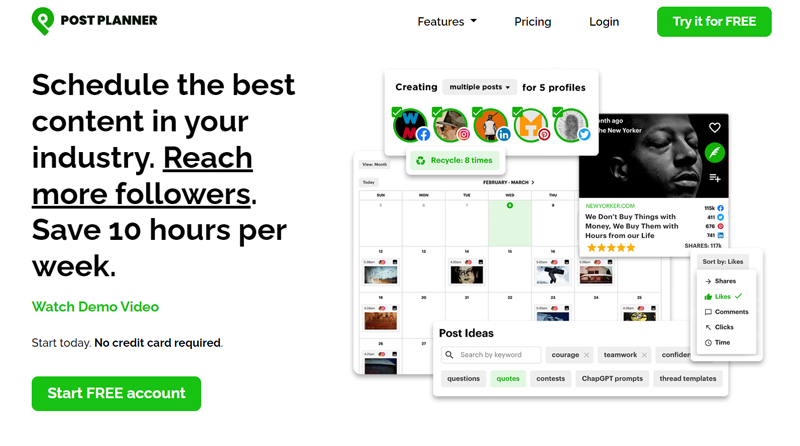
It allows you to schedule posts across 8 platforms, curate content from top sources, and avoid wasting time on unnoticed posts. With over 200,000 businesses using it, Post Planner is known for its ease of use, excellent customer service, and content discovery features.
Pricing:
PostPlanner is a social media tool with a freemium model. With the free plan, you can link one social media account, schedule up to 15 posts, and receive 100 AI credits daily.
Upgrading to the premium version unlocks additional features, and it comes in 3 pricing plans.
- Starter: Costs $7/month with 2 social accounts, 1 user, 150 scheduled posts, 12 saily poster accounts, and more.
- Growth: Costs $37/month with 12 social accounts, 2 users, 1,000 scheduled posts, 18 daily posts per account, etc.
- Business: Costs $57/month with 25 social accounts, 5 users, 5000 scheduled posts, 24 daily posts per account, and more.
ii. Canva
Canva is an all-in-one design platform that empowers users to create stunning visuals, including social media content. It offers an easy drag-and-drop interface for designing eye-catching social media posts.
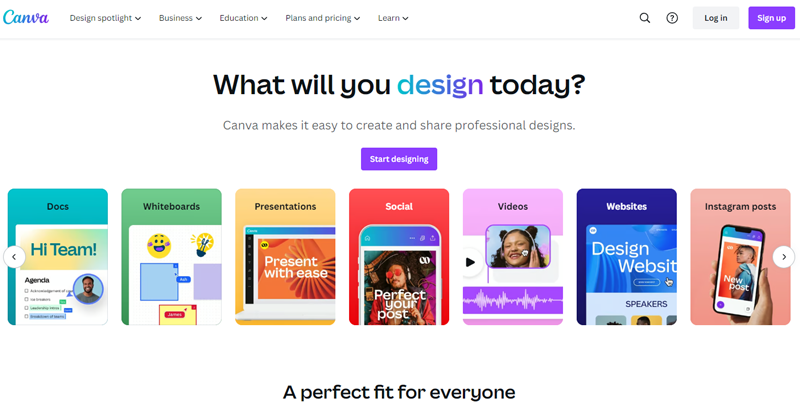
Whether you’re on Facebook, Instagram, Twitter, or LinkedIn, Canva provides templates, stock images, fonts, and customization options. You can design once and share seamlessly across different social media platforms.
Pricing:
Canva is a freemium tool. The free version allows you to try the tool and explore it yourself; however, it comes with restrictions.
You can upgrade to the premium version to unlock all the additional features for €110/year for one person.
iii. Buffer
Buffer is a publishing tool that manages different social media accounts for businesses and marketing teams to schedule posts and analyze performance. It’s compatible with various social media platforms such as Facebook, Twitter, LinkedIn, Instagram, and so on.
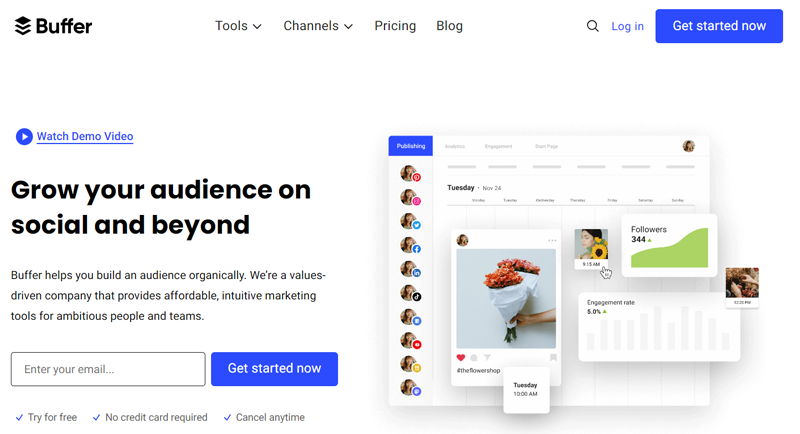
You can use it to set up a schedule for your social media posts and then add content to your Buffer queue. After that, it’ll automatically publish your post at the time you’ve designated. You can also use the Chrome extension to add content from the web to your Buffer queue, or you can share content on the go.
Pricing:
Buffer is a freemium social media tool available in different plans:
- Free: Connect up to 3 channels and access planning and publishing tools, a landing page builder, and an AI assistant.
- Essentials: Priced at $5 per month for 1 channel. This plan includes all free features plus engagement tools and analytics reports.
- Team: At $10 per month for 1 channel. This plan offers essential features plus unlimited team members, client management, and draft collaboration tools.
iv. Animoto
Animoto is a go-to social media tool for creating stunning marketing videos. You can produce videos by mixing different multimedia, such as photos, videos, clips, and text. It’s fast and very simple to use.
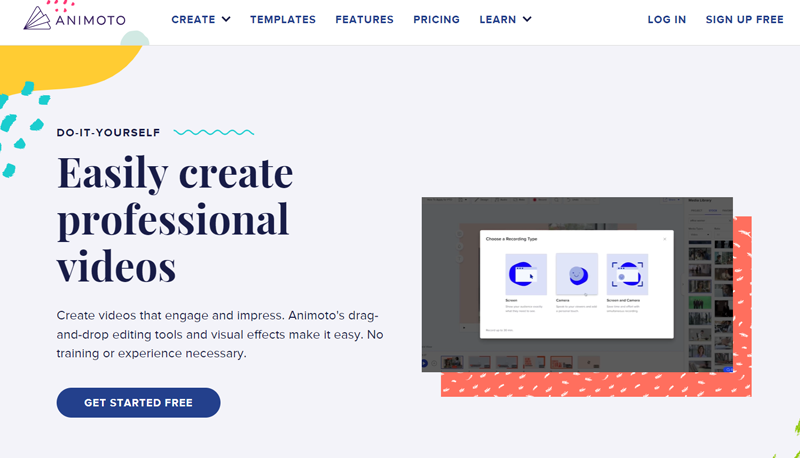
You can turn your photos and video clips into stunning and professional video in just a few minutes. It also has a large volume of templates and a collection of stock music to add depth to the video. This kind of tool helps you to capture a larger segment of your target audience.
Pricing:
You can use the free version of Animoto to quickly get started with video-making for your social media content. However, it comes with Animoto branding on your videos.
Meanwhile, for the premium version, you can upgrade it at the following pricing schemes:
- Basic: Costs $8/month. No Animoto branding, high-quality video, and unlimited downloads.
- Professional: It costs $15/month. It includes everything in Basic, plus your logo and colors, 3000 licensed music tracks, 40 professional fonts, and more features.
- Teams: Costs $39/month. Everything in Professional, plus 3 user seats, 100 million+ Premium licensed photos & videos from Getty Images, upload your own fonts, and more.
v. Sprout Social
Sprout Social is an all-in-one social media management solution designed to elevate your brand’s presence, drive revenue, and prove the ROI of your social efforts.
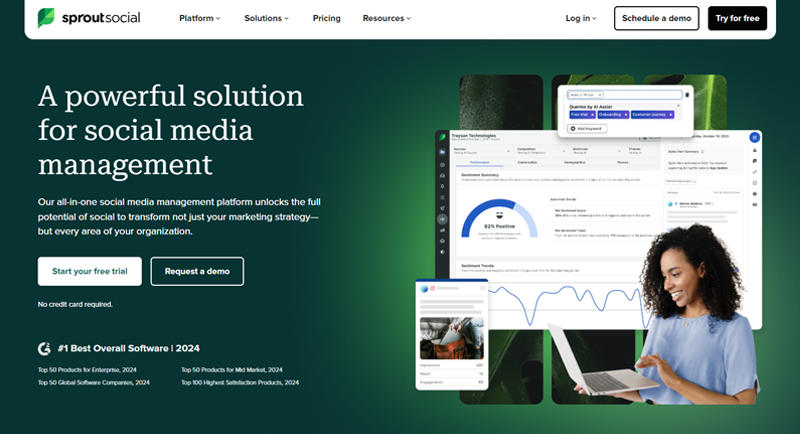
You gain robust features like engagement, listening, analytics, reporting, etc. Additionally, you can collaborate with your team and seamlessly integrate with existing tools and workflows. So you can have efficient social media marketing.
Pricing:
Sprout Social is a premium social media marketing tool with the following pricing options:
- Standard: Priced at $199 per month, it includes 5 social profiles, an all-in-one social inbox, a social content calendar, review management, and paid promotion tools.
- Professional: Available for $299 per month, this plan offers everything in Standard plus unlimited social profiles, competitive reports, trend analysis, and additional features.
- Advanced: At $399 per month, this plan includes everything in Professional as well as saved replies, chatbots with automation tools, and message spike alerts.
Example: How to Use Buffer for Your Social Media Marketing
Let’s talk about one of the tools that are mentioned above. In this, we will explain how Buffer is used to manage all of your social media handles at the same time from the same place.
HEre, we’ll go through step-by-step guide to using Buffer:
Step 1: Sign-Up
First, you need to create an account on this platform. To do so, go to its official website and click on the ‘Get Started now’ option.
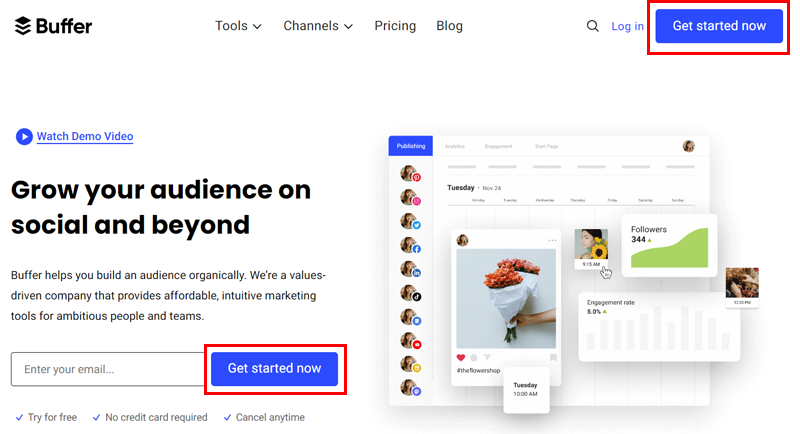
The sign-up is free. You can sign up for it with any of your Facebook, Twitter, or LinkedIn accounts, or you can use your email ID.
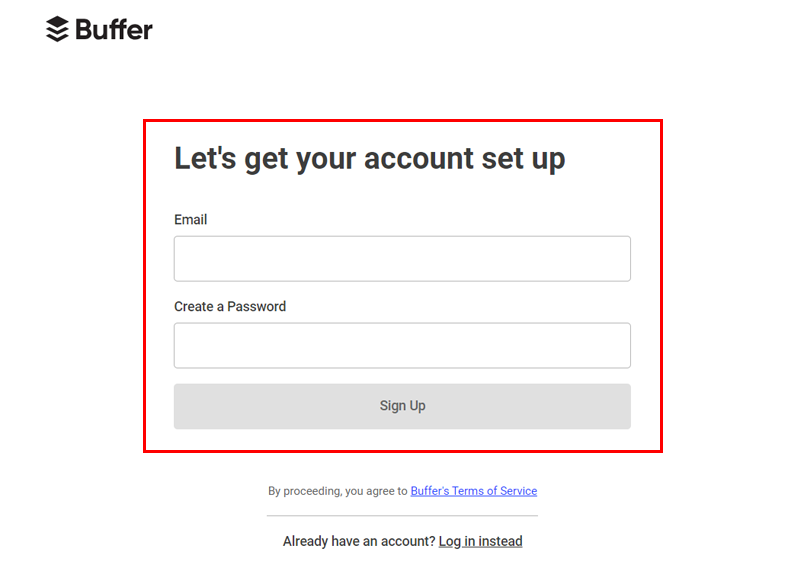
Step 2: Connect to Social Media Platforms
After you have completed the sign-up process, you’ll be redirected to the Buffer dashboard. Here, you can connect your Facebook, Instagram, Twitter, LinkedIn, etc., accounts.
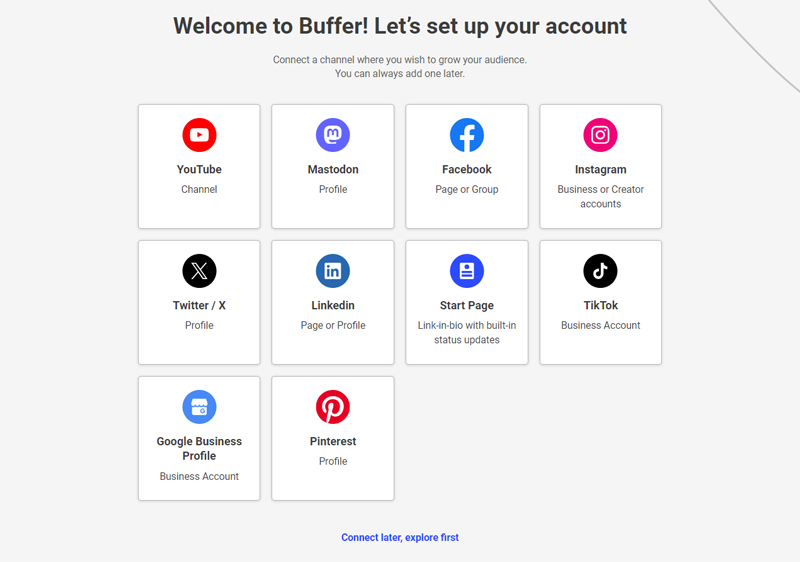
Remember that you can only connect to 3 social media accounts on your Buffer account in the free version.
Once you choose the channel, you’ll see a prompt like shown below, click on ‘Start Connecting’ option.
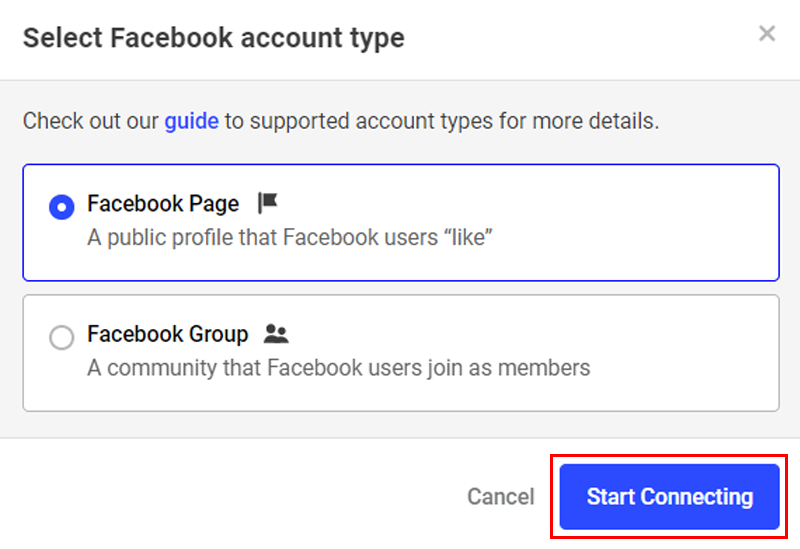
Then, add your social media account credentials. Repeat these steps with any other platform you wish to connect with your Buffer account.
Now, if you go to the ‘Channels’ tab, you can see all the social media that you have chosen to link to your Buffer account.
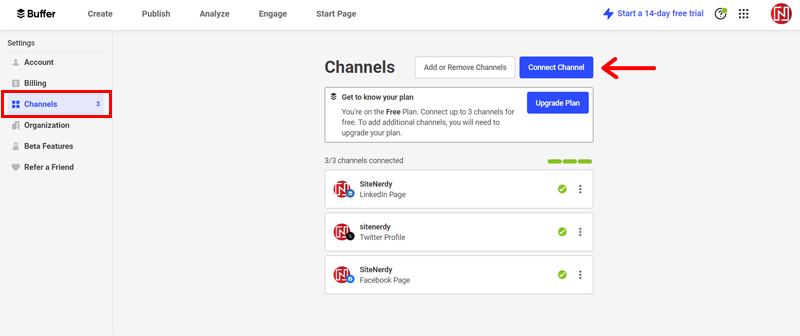
Again, if you want to add more channels, you can upgrade to the premium version and connect via the ‘Connect Channel’ option.
Step 3: Create Post
After you have linked your social media accounts to your Buffer, return to the ‘Publish’ tab. There, you’ll notice three tabs: Queue, Sent, Approvals, Drafts, and Settings.
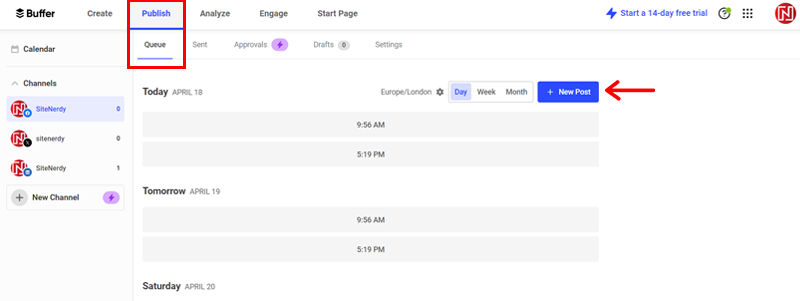
From the ‘Queue’ section, you can write a post and choose the social media platform where you would like to post that content. You can also use it to add images and videos to your post.
Step 4: Queuing and Publish Post
After you have created the post on your chosen platform, now you can either publish it right away or be scheduled to be posted at a later time.
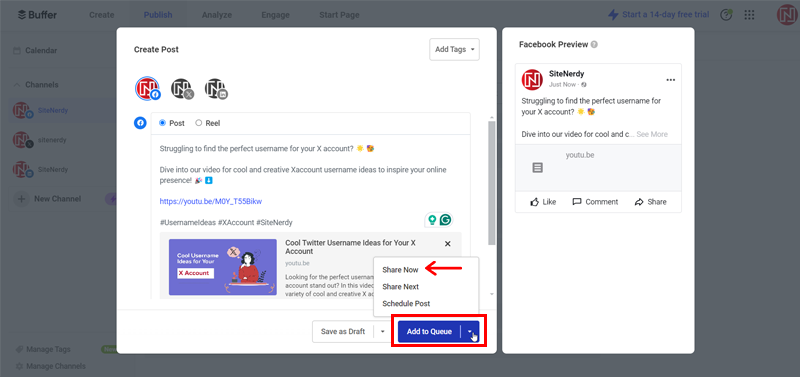
You can also change the timing of your post anytime you’d like. Or if you don’t want to rely on schedule, then you can press the drop-down menu that says ‘Add to Queue’. And press the ‘Share Now’ button to post your content instantly.
Step 5: Check the Status & Analytics
Now, under the ‘Sent’ tab of your Buffer account, you can see how well your posts are performing. It also lets you see how many people shared, commented, or liked your posts. If any of your posts are getting popular then you can also easily Rebuffer them to your queue.
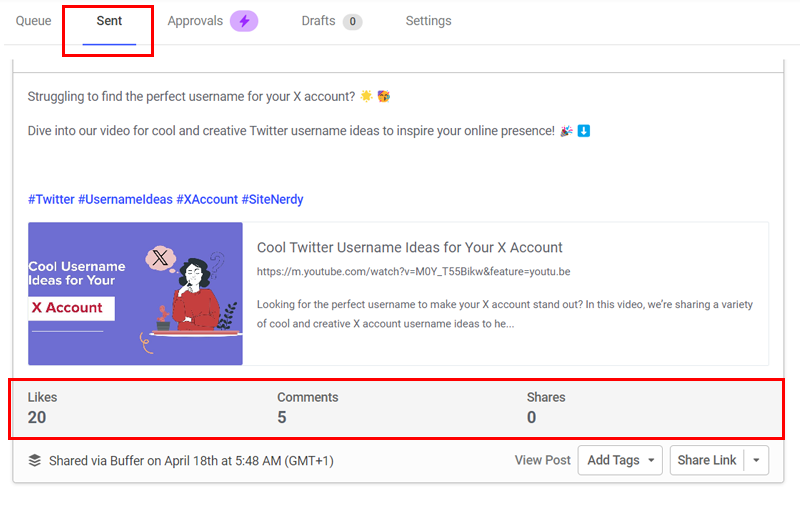
Buffer will also gather data on how well your content is performing and give you the option to rank your posts based on their popularity.
Hence, you can use the Buffer tool to schedule the posts for different social media accounts in one place. It’s very much easy to use and even beginners can learn to use it in a few minutes.
G) Recent Social Media Marketing Trends to Know
As we step into 2025, social media continues to evolve rapidly. Staying ahead of the curve is essential for marketers. Here are some trends to keep an eye on:
i. AI-Powered Content
AI has become a go-to tool for most marketers. Because AI helps you to work smart and save time, you can focus on other creative works.

- As of 2024, global market revenues of AI usage were expected to reach 36 billion U.S. dollars.
- Also, 56% of marketers say their company is active in using AI.
- While 68% say generative AI helps them to serve their customer better.
ii. Social Platforms as Search Engines:
Social platforms are becoming go-to search engines. Users increasingly rely on platforms like Instagram, Pinterest, and YouTube for discovery. So, optimizing your content for social search to enhance visibility is better.
iii. Short Videos are on Hype
How long have you stayed to watch a video?
As we’re in 2025, short videos are a big deal in social media marketing. Platforms like TikTok, Instagram Reels, and YouTube Shorts are popular for sharing quick and engaging content.
To make this more interesting:
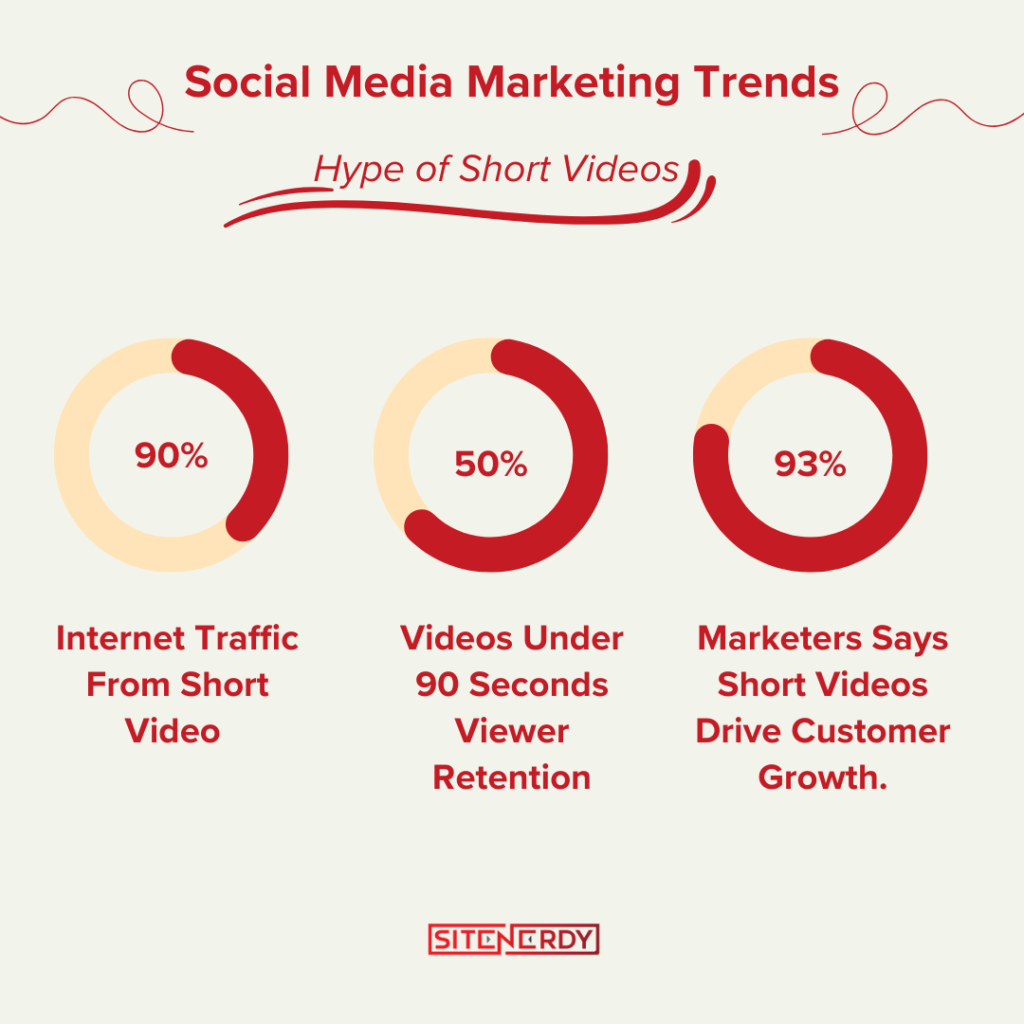
- 90% of all internet traffic comes from short video as of 2024. (Source)
- Also, videos under 90 seconds have a 50% viewer retention rate. (Source)
- And about 93% of marketers say short-form videos bring more customers. (Source)
With these data, we’re sure that, to boost your brand’s presence, creating short, engaging videos is a must.
iv. Social Media is New eCommerce
Most of us today like to shop using social media. And as we walk on 2025, it won’t be just sharing photos and catching up with friends.
With social media, customers get a seamless experience and get social proof of what their friends or influencers are buying.
To make this fact more believable:
- The global social eCommerce market is expected to reach $1.2 trillion in 2025. (Source)
- Also, in 2025, customers buying through social media are expected to reach 110.4 million in the US. (Source)
v. Entertainment Driven Content:
It’s always better to collaborate with influencers to amplify your brand’s reach. In fact, micro-influencers gain prominence due to their niche expertise. By that, you can build authentic partnerships that resonate with audiences.
vi. Micro Content Rules the Feed:
Attention spans are shrinking. Therefore, it’s necessary to create bite-sized, impactful content. It’s better to work on stories, reels, and short videos to capture fleeting attention effectively.
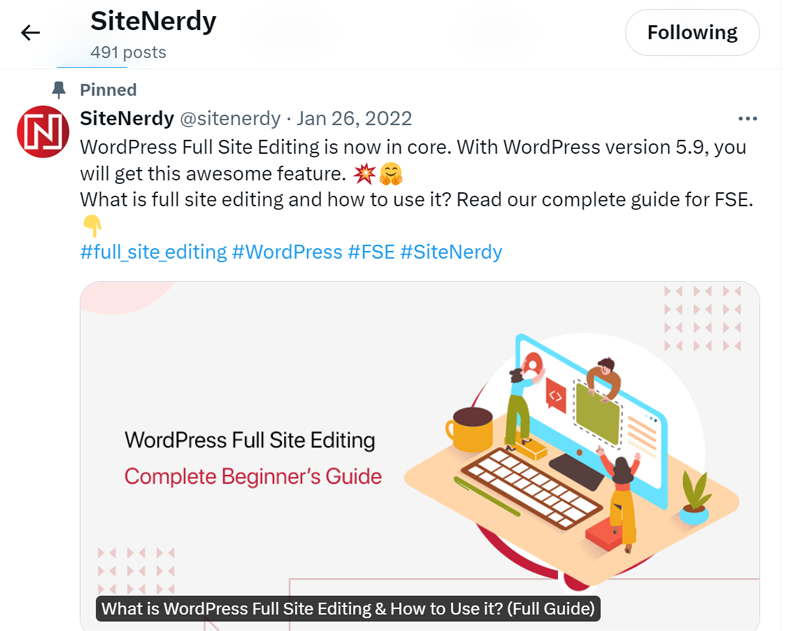
Remember, the social media landscape is dynamic and constantly changing. So, adapt, experiment, and stay flexible to thrive in 2025!
H) Frequently Asked Questions (FAQs) on Social Media Marketing & Strategy
Here are some frequently asked questions, along with their answers on social media marketing and strategy, to clear your pathway.
1. What Is Social Media Marketing?
Social media marketing is a type of digital marketing that leverages social media platforms to promote your brand, products, or services to your ideal customers. It requires strategic planning, content creation, and consistent effort for success.
2. Why should businesses use social media marketing?
Social media connects you with 4.9 billion users worldwide, strengthening brand identity and loyalty. Engaging with your audience can increase sales and revenue.
3. How can I create an effective social media marketing strategy in 2025?
Ensure leadership support, set clear objectives, and know your target audience. Choose the right platforms, allocate resources, and establish content workflows.
4. What types of content work best?
Use a mix of images, videos, stories, and infographics. Focus on storytelling, educational content, and user-generated content to boost engagement.
5. How do I measure social media marketing success?
Monitor KPIs such as engagement rates, follower growth, website traffic, conversions, and sales. Use analytics tools for tracking and adjustments.
6. What are the must-know trends for social media marketing in 2025?
Key trends include video content, booming influencer marketing, micro-content, social commerce, selective platforms, and more.
Conclusion
And that’s all!
We hope that you simply are now familiar with all major concepts associated with social media marketing. Following this guide step-by-step, you’ll be ready to create a successful social media marketing strategy for your brand.
If you have any further questions about social media marketing, then please leave a comment below. We’ll try to get back to you as soon as possible.
Do you want to connect WordPress with social networks? Then, check out our article on the best WordPress social media plugins to know more.
Also, check out our article on what is affiliate marketing and what is email marketing. Be sure to go through it once. If you like this article, then please share it with your friends and colleagues.

